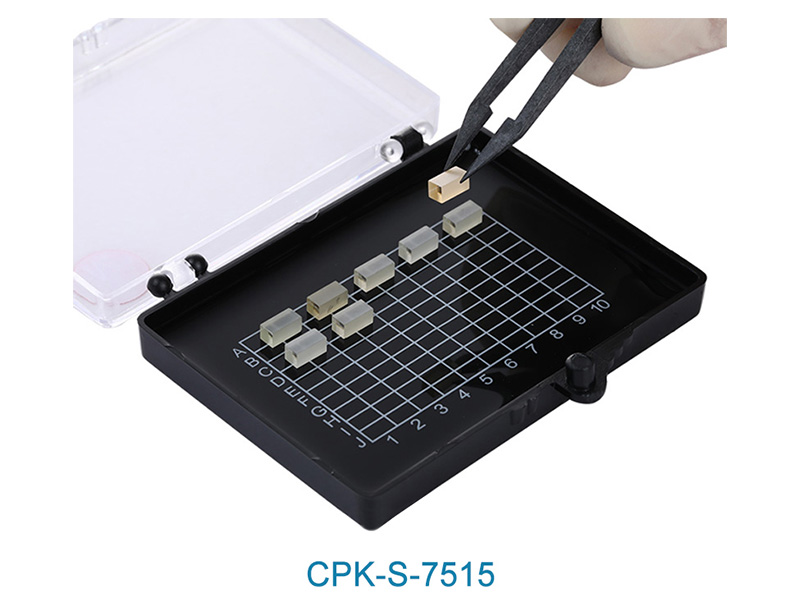Antistatic Sticky Box
2024.02.21 / By admin
Meta Descriptions
Protect your electronics with antistatic sticky box from CrysPack, designed to prevent static buildup. CrysPack is here for you.

Looking Ahead: Future Trends and Innovations in Antistatic Sticky Box
In collaboration with industry leaders like CrysPack, the future of static control solutions is brighter than ever. By harnessing the power of innovation and technology, businesses can safeguard their operations against the detrimental effects of static electricity, ensuring a future of reliability, efficiency, and sustainability.
I. Introduction
A. Definition of static electricity
Static electricity, often encountered in our daily lives, is the buildup of electric charge on the surface of an object due to friction with another material. This charge imbalance can cause objects to stick together or repel each other, among other effects.
B. Challenges posed by static electricity in various industries
Static electricity poses significant challenges across various industries, including electronics manufacturing, packaging, and pharmaceuticals. It can lead to product defects, equipment malfunction, and even safety hazards.
C. Introduction to the concept of antistatic sticky boxes
In response to these challenges, innovative solutions such as antistatic sticky boxes have emerged. These boxes offer a proactive approach to mitigate the risks associated with static electricity, ensuring the integrity of sensitive materials and components.
II. Understanding Static Electricity
A. What causes static electricity?
Static electricity occurs when electrons are transferred between two objects, leading to an accumulation of charge. This transfer commonly happens through friction, as electrons move from one material to another, creating a positive or negative charge imbalance.
B. How static electricity affects different materials
The impact of static electricity varies depending on the materials involved. For instance, insulating materials like plastics are more prone to static buildup, while conductive materials such as metals dissipate charge more readily.
C. Impact of static electricity on electronic components, packaging, and manufacturing processes
In industries like electronics manufacturing, static electricity can damage sensitive components, leading to costly failures and product recalls. Similarly, in packaging, static can cause products to cling to packaging materials, affecting production efficiency and product quality.
III. The Need for Static Control Solutions
A. Risks associated with static discharge
Static discharge can result in sparks capable of igniting flammable materials or damaging electronic components. Moreover, in sensitive environments like cleanrooms, even minor static events can compromise product quality and safety.
B. Industries where static electricity poses significant challenges
Industries such as semiconductor manufacturing, pharmaceuticals, and chemical processing are particularly susceptible to the adverse effects of static electricity. These industries require stringent static control measures to maintain product integrity and safety.
C. Importance of implementing effective static control measures
Implementing effective static control measures is crucial for ensuring product quality, minimizing downtime, and safeguarding personnel and equipment. By proactively addressing static electricity, companies can prevent costly disruptions and uphold their reputation for reliability.
IV. Introducing the Antistatic Sticky Box
A. Definition and purpose
The antistatic sticky box is a specialized packaging solution designed to neutralize static charge and prevent its buildup on enclosed items. It serves as a protective barrier against static discharge, safeguarding sensitive materials during storage and transportation.
B. How it works: mechanism and components
The antistatic sticky box utilizes a combination of antistatic materials and adhesive properties to capture and dissipate static charge from enclosed items. Its design incorporates conductive layers and proprietary coatings to ensure effective static control.
C. Advantages over traditional antistatic measures
Compared to traditional antistatic packaging materials such as bags or wraps, the antistatic sticky box offers several advantages. It provides consistent and uniform static protection, eliminates the need for additional antistatic treatments, and simplifies handling and disposal processes.
V. Applications and Benefits
A. Electronics manufacturing and assembly
In the fast-paced world of electronics manufacturing, where even the slightest static discharge can wreak havoc on delicate components, the antistatic sticky box shines as a beacon of reliability. By neutralizing static charge, it safeguards sensitive electronics during storage and assembly, ensuring optimal performance and reliability.
B. Pharmaceutical and medical device packaging
The pharmaceutical and medical device industries demand uncompromising adherence to quality standards. Antistatic sticky boxes offer a sterile and protective environment for packaging sensitive materials, minimizing the risk of contamination and ensuring product integrity from production to delivery.
C. Food packaging and processing
Static electricity poses unique challenges in the food packaging and processing industry, where adherence to hygiene and safety standards is paramount. Antistatic sticky boxes provide a clean and controlled environment, preventing static buildup that could attract contaminants or compromise product quality.
D. Textile and printing industries
In the textile and printing industries, static electricity can cause materials to cling together or attract dust and debris, leading to production delays and quality issues. Antistatic sticky boxes offer a solution by neutralizing static charge, allowing for smooth and efficient processing of materials.
E. Other potential applications
Beyond these industries, the versatility of antistatic sticky boxes opens doors to a wide range of applications. From automotive manufacturing to aerospace engineering, any environment where static-sensitive materials are present can benefit from the protection and reliability they provide.
VI. Case Studies
A. Real-world examples of companies implementing antistatic sticky boxes
Companies across various industries have embraced antistatic sticky boxes as a proactive solution to their static control needs. From multinational corporations to small businesses, these companies have experienced firsthand the benefits of enhanced product protection and operational efficiency.
B. Success stories and testimonials
Testimonials from satisfied customers underscore the effectiveness of antistatic sticky boxes in mitigating static-related issues. By minimizing product defects, reducing downtime, and improving overall production efficiency, these success stories serve as compelling evidence of the value these solutions bring to businesses.
VII. Implementing Antistatic Sticky Boxes in Your Facility
A. Considerations for installation and integration
Integrating antistatic sticky boxes into your facility requires careful planning and consideration. Factors such as workflow, material compatibility, and environmental conditions should be taken into account to ensure optimal performance and seamless integration with existing processes.
B. Maintenance and monitoring procedures
Regular maintenance and monitoring are essential to ensure the continued effectiveness of antistatic sticky boxes. This includes periodic inspections, cleaning, and replacement of worn components to uphold their static control capabilities and prolong their service life.
C. Training for personnel
Proper training for personnel is crucial to maximize the benefits of antistatic sticky boxes and minimize the risk of human error. Employees should be educated on the importance of static control measures and instructed on the proper handling and use of antistatic packaging materials.
VIII. Future Trends and Innovations
A. Potential advancements in antistatic technology
As technology continues to advance, so too do the capabilities of antistatic solutions. Future innovations may include enhancements in material science, such as the development of more efficient conductive coatings or the integration of nanotechnology for enhanced static control.
B. Integration with Internet of Things (IoT) and automation
The integration of antistatic sticky boxes with IoT technology and automation systems holds the promise of improved efficiency and real-time monitoring capabilities. By leveraging data analytics and predictive maintenance algorithms, businesses can optimize their static control processes and reduce operational costs.
C. Sustainability and environmental considerations
In an increasingly eco-conscious world, sustainability is a key consideration for businesses seeking static control solutions. Future developments may focus on the use of renewable materials and environmentally friendly manufacturing processes to minimize the environmental impact of antistatic products.
Conclusion
As a leading supplier of antistatic packaging solutions, CrysPack continues to innovate and refine its products to meet the evolving needs of industries reliant on static-sensitive materials. By investing in proactive static control measures like the antistatic sticky box, companies can mitigate risks, enhance productivity, and uphold their commitment to quality and safety.

